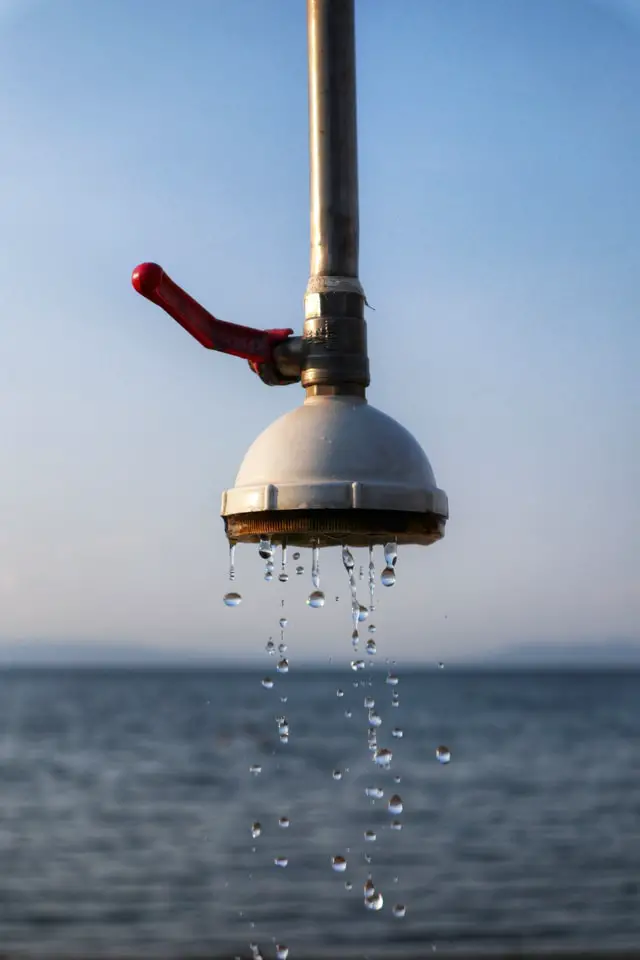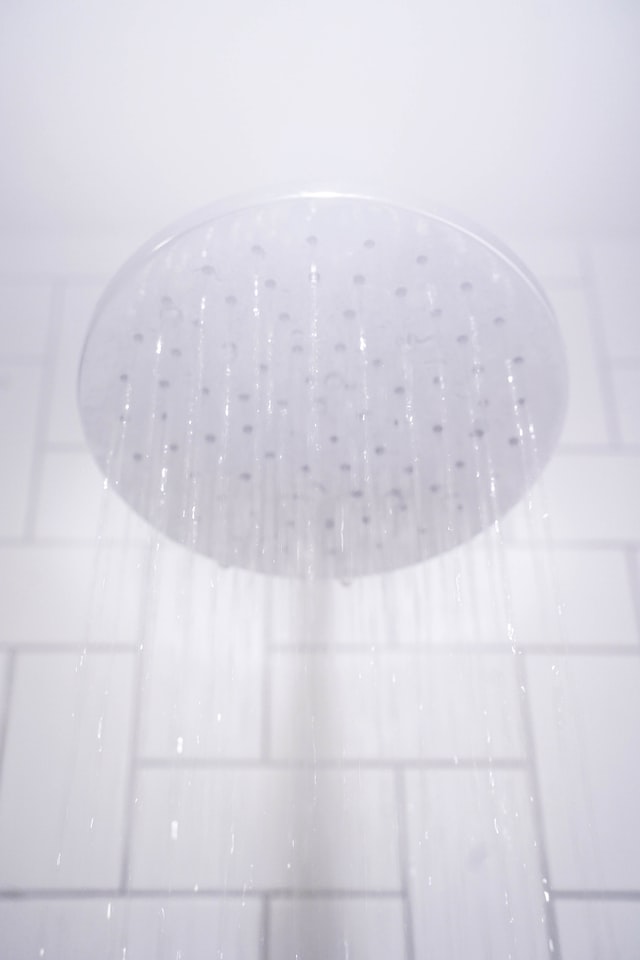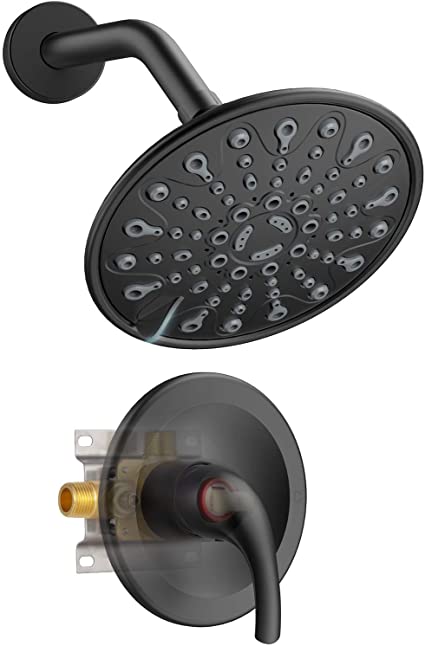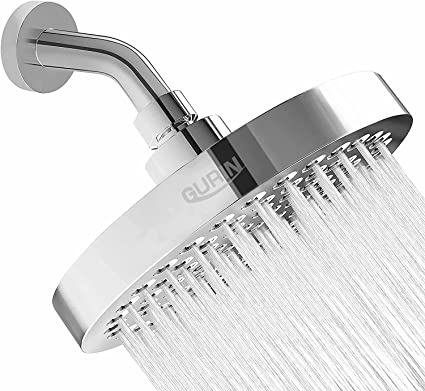There is nothing more annoying than realizing that your shower has been running all night, long after you thought it was closed. Aside from being an expensive problem, you’re also wasting a lot of water! If you’ve been trying to find a solution to this problem, you don’t need to worry anymore because we will show you how to fix a shower that won’t stop running.
In this article, we’ll offer you a solution to your problem. We’re also going to explain why your shower keeps running even after you have switched it off and give you some tips on maintaining your shower.
A running shower head is a massive pain in the neck, so let’s take a closer look at how to solve this problem.
Related Article: How to stop water from running out of shower
Why does my shower keep running after I turn it off?

There are three answers to this question.
1. You have a defective shower valve or a defective shower cartridge
The most straightforward answer to this question is that you either have a faulty shower valve or cartridge.
A shower valve lives behind your shower faucet’s handle. It has two primary purposes: To manage the water’s temperature and switch the shower off and on. When the valve is working well, it means that you get the right amount of hot or cold water when taking a shower because it prevents only boiling water or cold water from coming out of the faucet. Additionally, when the valve is working correctly, it makes sure that the shower faucet stays off when your turn the handle. In other words, the shower valve helps make your showering experience more convenient and pleasant by controlling the water temperature and pressure.
As a result, your shower keeps running because the shower valve isn’t working the way it should be and is stopping the water from flowing after turning the faucet off.
Alternatively, the cartridge in your shower valve might be what’s causing the shower to keep running after you turn it off. The cartridge comes with two pieces that ensure that water flows. When the cartridge in the valve is loose, it causes your shower to continue running.
Also Read: How High to Install Shower Valve
2. You have a loose shower faucet handle
It’s no secret that water flowers from the faucet when you turn the shower handle. Every type of faucet is constructed with a screw that keeps the handle in its place. When the screw is firmly set in place, it means that the faucet won’t leak, but as it loosens over time, it can cause the faucet to dribble and then run, even after you switch it off.
Also Read: 9 Best Rated Shower Faucets In The Market
3. You have a clogged shower faucet

Even though a clogged faucet might sound like a reason for a shower to stop running, it is possible! As a shower faucet ages over time, debris like sand and dirt can accumulate in the faucet and live there if you don’t clean your shower regularly. The residue can reroute the water and cause leaks, which means that even after you switch the shower off, it continues running.
How do you fix a shower that won’t stop running?
There are a few different ways of fixing a shower that won’t stop running. Given below is a list of three methods that will help you.
Replace your shower valve
Repairing your shower valve is one of the most manageable at-home plumbing tasks you could do. Even though you’re might feel a bit iffy about taking on this task, we can assure you that it’s simpler than you might realize! If you feel nervous, we recommend reading through the instructions below a couple of times before starting the repair process. It would be best to ensure you have all the tools necessary.
Here is what you will need:
- A screwdriver
- Pliers
- Needle nose pliers
- A new shower valve
- Caulk
- A clear plastic box to collect any screws
- A retainer clip
Here’s what you need to do to replace a shower valve:
- First, switch off the primary water connection in your home. This step is crucial because it enables you to work in peace without worrying about water splashing all over yourself. Clarify that the water is off by turning on a different faucet before moving on to the next step.
- If your shower faucet handle has a trim plate on top of it, you will need to use a sharp object to help you yank it open. The trim plate is also called an escutcheon.
- Next, using the screwdriver, remove the shower handle. Depending on the make and model of your shower, you will need to use a flathead screwdriver to unscrew the tiny screw below the handle. Moving the screwdriver in an anticlockwise direction will help you remove the handle easily. Once you have loosened the screw, you can remove the handle.
- After that, you need to remove the trim plate placed behind the shower handle. You can do this by using your screwdriver to detach the screws holding the plate to the shower valve. You can skip this step if you don’t have a trim plate.
- Now, you need to take off the retainer clip. You can do this by using the needle-nose pliers to grip the retainer clip and pull it up.
- Next, use the regular pliers to pull the valve out.
- Once you’ve removed it, slide the new shower valve in.
- Reinstall your trim plate, and then switch your water connection back on.
Just like that, you’ve replaced your shower valve!
Replace the showerhead
Replacing a showerhead is one of the easiest ways to stop your shower from running. All you need to do is buy a replacement showerhead and follow the steps below!
Here’s how to replace a shower head faucet.
- Before you begin, make sure that you turn your main water supply off to avoid getting splashed while replacing the faucet.
- Turn the shower faucet in an anticlockwise motion until it comes off.
- You will also need to remove the shower handle and trim plate before reinstalling a new faucet.
- Next, fit the new faucet head onto the pipe where the old head was, and turn the showerhead clockwise.
- Rotate the showerhead until you are confident that it is tight and secure in its place.
- Switch on your water connection again to confirm that the showerhead is secure and let the water run for a few seconds.
- If the showerhead is loose, turn the water off, tighten it further, and use it.
Where is the shut-off valve for a shower?
It’s important to note that while some showers have a shut-off valve, many showers do not. This is because it is often an expensive and luxurious item to install for only one plumbing apparatus in a bathroom.
However, if you are confident that your shower has an individual shut-off valve, it will most likely be located near the shower itself. This means it will most likely be on the wall facing the shower. It is likely outside the bathtub if you have a shower and bathtub combination in your bathroom.
In most cases, a shower valve is usually located in either a utility closet, basement, or laundry room.
Shutting off the water supply in your home is a crucial step that needs to be taken before doing any plumbing-related repairs at home.
Shower Maintenance Tips
When it comes to maintaining your shower, here are tips that you need to keep in mind:
Clean your shower faucet regularly

When you clean your shower faucet often, you’re making sure that no debris and dirt accumulate in it while also being able to bathe more hygienically.
Let your shower dry after using it
A common mistake that many people make is that they don’t let their showers dry after using them. Once you’ve finished bathing, switch your exhaust fan on and let it run for about ten minutes to prevent mildew or mold from growing in your bathroom.
Rinse your shower after you are finished bathing
Rinsing your shower after using it helps you get rid of residual soap and shampoo, along with other lingering dirt and gunk in your bathroom. Rinsing your shower and bathing area can help you keep your shower clean for much longer.
FAQ’s
This might be because your shower valve is upside down or because there is a blockage in your shower faucet that is causing the water to change direction and come out of both the showerhead and faucet.
You can, but only if your shower has an individual valve.
You’ll know if your shower diverter is bad if you get too much or too little hot and cold water or if the water flows too slowly.
Wrapping Up
In this article, we walked you through two ways to solve the annoying problem of a constantly running shower. There’s nothing worse than wasting water! We’ve shared methods that are easy to follow and quick to get through. We hope they help you!


